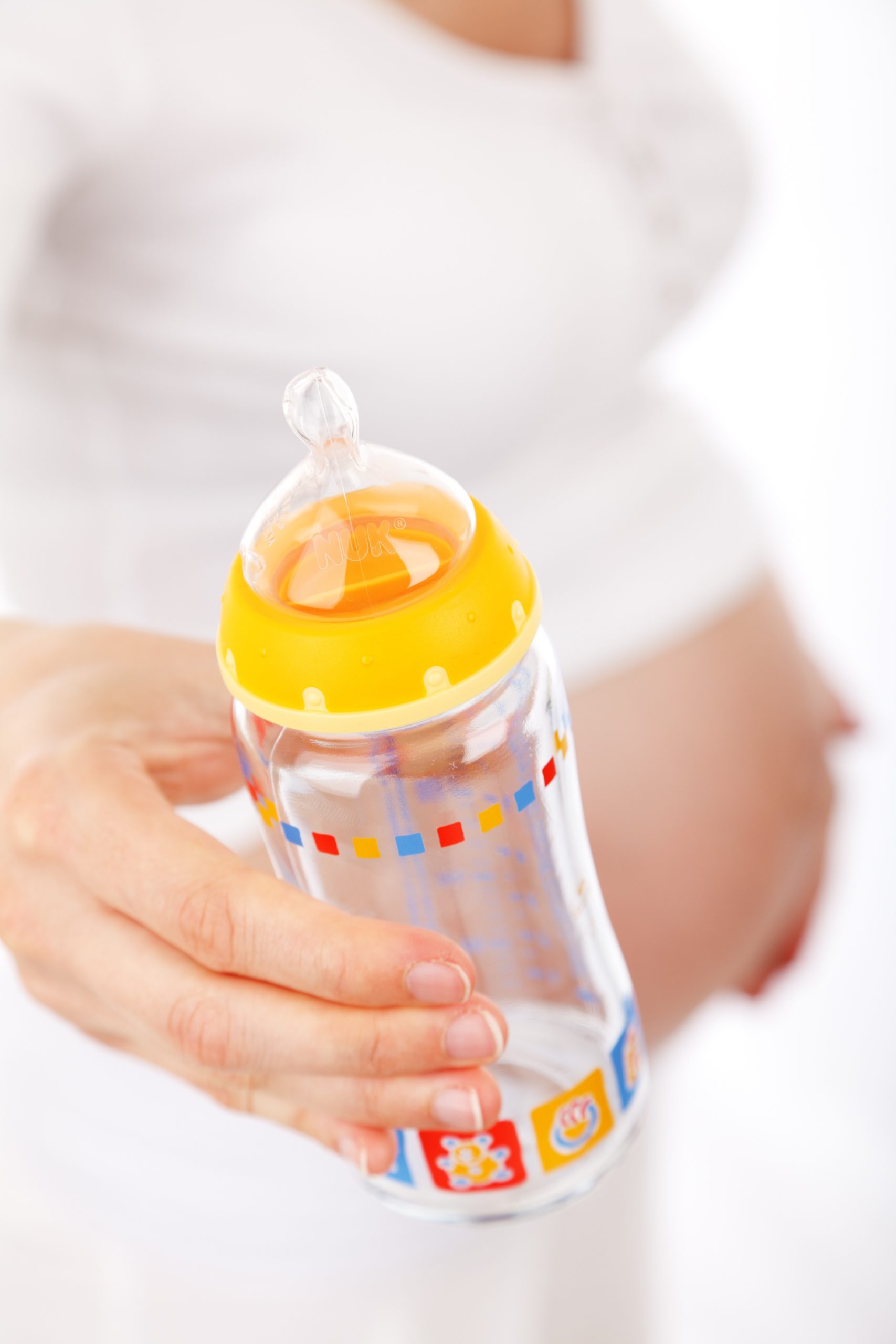How did we get to the cow in the first place?

When commercial infant formula came along, its manufacturers marketed these products as a safe alternative to breast milk. As breastfeeding rates decreased from 90% in the 20th century to just 42% of babies in the 21st century, the use and marketing of infant formula have come under scrutiny. Studies have shown that cow milk formula can cause necrotizing enterocolitis (NEC) in premature infants, but the manufacturers have marketed their products as safe and necessary for growth in preterm babies.
Introduction of Formulas
Alternative feeding methods were used as early as 2000 BC because some mothers may not be able to produce enough breast milk, or the infant was without a mother. Often donor milk was used but not always available, so Nestles sold the first commercially available formula in the US in the late 1870s. Other brands soon followed and were even sold in Sears catalog.
Thomas Morgan Rotch of Harvard Medical School developed what came to be known as the “percentage method” of infant formula feeding. The percentage method used formulas physicians recommended to parents based on a baby’s nutritional needs, mixing cow’s milk, water, cream, and sugar or honey in specific ratios. This mix was thought to accommodate the baby’s digestive system. They used this method from the 1890s until 1915, when physicians became frustrated with the complex process of prescribing formulas, so they began recommending evaporated milk and occasionally commercial formulas.
Physicians felt that formula manufacturers should not handle infant nutrition because they believed commercial formulas to be inadequate for infant nutrition without proper guidance. This led to physicians prescribing specific formulas based on the percentage method, but by the 1920s, they were becoming frustrated by the complexity of prescribing and modifying each formula to each baby’s needs. Physicians began recommending evaporated formulas to mothers who needed an alternative method to feed their infants.
After doctors began recommending evaporated milk, it started growing in popularity due to its price, and the studies that suggested babies fed evaporated milk did as well as breastfed babies. Approaching the 1930s, evaporated milk used for infant feeding surpassed all commercial formulas and was given to over half of all bottle-fed babies. Although commercial formulas had been available for years, they did not come close to competing with evaporated milk formulas until the 1950s.
The Marketing of Commerical Formulas
The 1950s saw makers of formulas derived from cow’s milk, like Similac and Enfamil, begin marketing campaigns that provided these affordable formulas to hospitals and pediatricians. These commercial formulas only took 10 years of marketing to overtake evaporated milk formulas because of the ease of use and a belief that the formulas were “medically-approved” to provide nutrition for young infants in place of breast milk. They used hospitals to introduce their products by giving infants ready-to-feed bottles, which gave consumers’ confidence in these products. Mothers went home with samples of these products, which were often needed as hospitals introduced infants to bottles, and when a baby is switched from breast to bottle it can cause nipple confusion and prevent the mother from producing enough milk.
The practice of advertising through hospitals continued as the formula industry expanded its efforts to the public in the late 1980s. Physicians once again did not think that the manufacturers of formulas should advertise to the public.
The American Academy of Pediatrics (AAP) released a statement explaining their opposition to advertising formulas to the public because they negatively affect breastfeeding, undermine physician advice on infant nutrition, confuse consumers and increase the cost of infant formula.
Marketing baby formula directly to the public and hospitals has given parents trust in their products and the belief that they are equal to or, in some cases, superior to breast milk.
Formula manufacturers marketed their cow’s milk products as safe using the methods discussed above, sending mothers home with sample formula, and giving premature infants in the NICU cow’s milk formula. Cow’s milk formula is linked to necrotizing enterocolitis (NEC) in premature infants, with studies showing that premature infants fed cows’ milk formula or fortifier are 6 to 10 times more likely to develop NEC.
Follow our blog to read our next article on “why cows’ milk was given to premature infants in the NICU.”

